Over the past few weeks, we’ve been examining projections for all 30 NBA teams for the 2025/26 season, publishing polls asking how many games each club will win. With the help of lines from professional oddsmakers, we’ve had you vote on whether each team will go over or under a given win total, from the Thunder (62.5) all the way through to the Jazz (18.5).
Here are the full results of those votes:
Eastern Conference
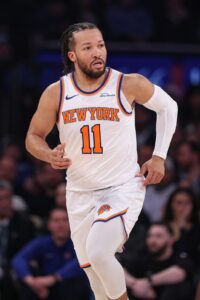 New York Knicks (53.5 wins): Over (63.2%)
New York Knicks (53.5 wins): Over (63.2%)- Boston Celtics (42.5 wins): Over (52.7%)
- Philadelphia 76ers (42.5 wins): Under (58.7%)
- Toronto Raptors (37.5 wins): Over (50.2%)
- Brooklyn Nets (20.5 wins): Over (54.4%)
- Cleveland Cavaliers (56.5 wins): Over (58.0%)
- Detroit Pistons (46.5 wins): Over (60.5%)
- Milwaukee Bucks (42.5 wins): Over (74.4%)
- Indiana Pacers (37.5 wins): Over (50.1%)
- Chicago Bulls (32.5 wins): Over (60.8%)
- Orlando Magic (51.5 wins): Over (52.8%)
- Atlanta Hawks (47.5 wins): Over (54.9%)
- Miami Heat (37.5 wins): Over (54.4%)
- Charlotte Hornets (27.5 wins): Over (50.6%)
- Washington Wizards (21.5 wins): Under (62.4%)
Western Conference
- Oklahoma City Thunder (62.5 wins): Over (62.9%)
- Denver Nuggets (53.5 wins): Over (72.1%)
- Minnesota Timberwolves (49.5 wins): Over (58.7%)
- Portland Trail Blazers (34.5 wins): Over (57.1%)
- Utah Jazz (18.5 wins): Over (55.3%)
- Los Angeles Clippers (48.5 wins): Under (58.7%)
- Los Angeles Lakers (48.5 wins): Under (52.1%)
- Golden State Warriors (46.5 wins): Over (68.3%)
- Sacramento Kings (34.5 wins): Over (55.1%)
- Phoenix Suns (31.5 wins): Under (56.8%)
- Houston Rockets (52.5 wins): Over (55.5%)
- San Antonio Spurs (44.5 wins): Over (57.6%)
- Dallas Mavericks (41.5 wins): Over (71.8%)
- Memphis Grizzlies (39.5 wins): Under (61.3%)
- New Orleans Pelicans (30.5 wins): Under (54.9%)
It’s pretty common for our poll respondents to pick more overs than unders, with optimism high in most NBA cities following an offseason of change. But we took it to a new extreme this year, going over on 23 teams and under on just seven.
Technically, it’s not impossible for 23 teams to beat their projected win totals. If 20 teams go over by one win and one team goes under by 20 wins, it all evens out. It’s very much a long shot, of course, but you never know.
These were the five “over” bets that received the largest vote shares:
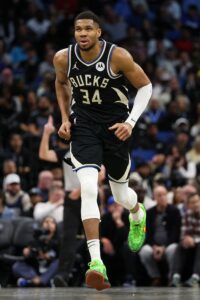 Milwaukee Bucks (42.5 wins): 74.4%
Milwaukee Bucks (42.5 wins): 74.4%- Denver Nuggets (53.5 wins): 72.1%
- Dallas Mavericks (41.5 wins): 71.8%
- Golden State Warriors (46.5 wins): 68.3%
- New York Knicks (53.5 wins): 63.2%
Because we published our polls over the span of a few weeks, there has been some heavy betting action on some of these numbers ahead of the start of the season, pushing the projections in one direction or the other. The “over” has been especially popular for the top four teams on this list, with the Bucks’ and Nuggets’ projected win totals increasing by one apiece in some sportsbooks, while the Warriors’ has risen to 48.5 wins.
I like all five of these bets, though there’s some significant health-related risk for the Mavericks, who are already without Kyrie Irving and who will have to lean heavily on oft-injured Anthony Davis this season. I could also see the Knicks taking some time to adjust to the changes new head coach Mike Brown is implementing and falling short of 54 wins.
But I think the Bucks, Nuggets, and Warriors are good candidates to go over this season as long as they can avoid major injuries.
Here are the five “under” bets that received the largest vote shares:
- Washington Wizards (21.5 wins): 62.4%
- Memphis Grizzlies (39.5 wins): 61.3%
- Los Angeles Clippers (48.5 wins): 58.7%
- Philadelphia 76ers (42.5 wins): 58.7%
- Phoenix Suns (31.5 wins): 56.8%
It’s not uncommon for projected cellar-dwellers like the Wizards to fall short of their projected win totals, since they typically go out of their way to put themselves in position to rack up losses after the trade deadline. Washington will only keep its 2026 first-round pick if it lands within the top eight, so the front office will be motivated to finish near the bottom of the NBA standings.
The injuries are already racking up for the Grizzlies, though stars Ja Morant and Jaren Jackson Jr. are trending toward being available for opening night. Memphis’ success this season could hinge in large part on how many games that duo plays together.
Our voters aren’t buying a Sixers bounce-back after an injury-plagued 2024/25 campaign, and aren’t bullish on the new-look Suns following the offseason exits of Kevin Durant and Bradley Beal. Fair enough.
The one that surprised me most was the Clippers — I think they have more than enough depth to get to 49 wins in the regular season, even if they have to deal with some injuries. They won 50 games a year ago even though Kawhi Leonard only played in 37.
Here are the five picks that were closest to 50/50:
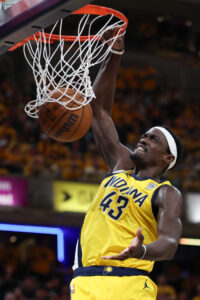 Indiana Pacers (37.5 wins): Over (50.1%)
Indiana Pacers (37.5 wins): Over (50.1%)- Toronto Raptors (37.5 wins): Over (50.2%)
- Los Angeles Lakers (48.5 wins): Under (52.1%)
- Boston Celtics (42.5 wins): Over (52.7%)
- Orlando Magic (51.5 wins): Over (52.8%)
The Pacers and Celtics are two of the toughest teams to forecast for the 2025/26 season. Neither team will be as good as usual while Tyrese Haliburton and Jayson Tatum recover from Achilles tears, and they lost other key contributors over the summer too — Myles Turner for Indiana, and a handful of players, including Jrue Holiday, Al Horford, and Kristaps Porzingis, for Boston. But both franchises have a strong culture, a good head coach, and a smart front office, so it’s hard to say just how significantly those losses will impact them.
As close as the Raptors’ and Lakers’ votes were, I think both ended up on the right side of the 50/50 divide — Toronto’s projected win total has risen to 39.5 since we published our poll, while the Lakers has dipped to 46.5, largely due to LeBron James‘ health concerns.
As for the Magic, they haven’t won 52 or more games in a season in 15 years, so I understand why nearly half of our voters were reluctant to go over. But if they have better health luck than last year, there’s certainly enough talent on the roster to get there.
What do you think of our picks in general? Are there any results above that you strongly disagree with? Did you make any over or under votes within the last couple weeks that you’re second-guessing now? Jump into our comment section below and weigh in with your thoughts!
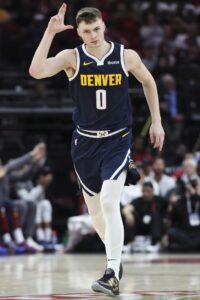
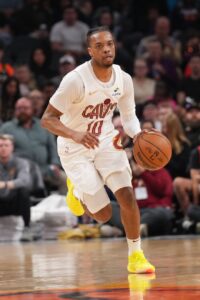
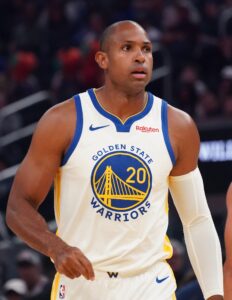
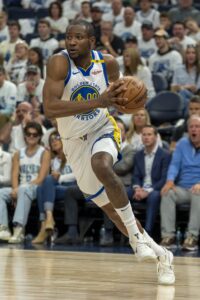 Obviously, Golden State’s front office wasn’t just taking a two-and-a-half month vacation.
Obviously, Golden State’s front office wasn’t just taking a two-and-a-half month vacation. 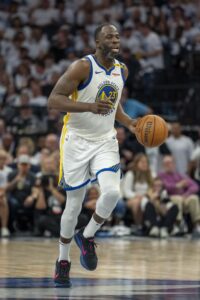
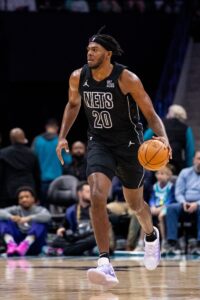
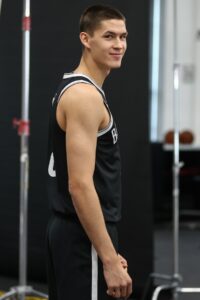 As the only team holding that many first-round picks and the only team with significant cap room available this offseason, it seemed obvious what sort of approach the still-rebuilding Nets would take to the summer. The general expectation was that they’d probably make a couple of their first-round picks while looking to roll at least one or two of them over to a future year, and that they’d use their cap room to take on unwanted contracts and continue stockpiling future draft assets in trades.
As the only team holding that many first-round picks and the only team with significant cap room available this offseason, it seemed obvious what sort of approach the still-rebuilding Nets would take to the summer. The general expectation was that they’d probably make a couple of their first-round picks while looking to roll at least one or two of them over to a future year, and that they’d use their cap room to take on unwanted contracts and continue stockpiling future draft assets in trades.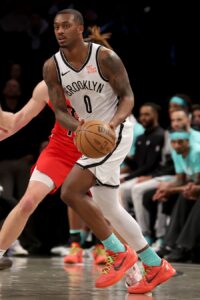 Timme’s release came as no real surprise despite his strong finish last season — he has played almost exclusively in the G League since going undrafted out of Gonzaga in 2023. Waiving Whitehead wasn’t quite as obvious, but injuries have derailed his NBA career so far, and the Nets are in position to eat some guaranteed salary due to their position relative to the cap (and the
Timme’s release came as no real surprise despite his strong finish last season — he has played almost exclusively in the G League since going undrafted out of Gonzaga in 2023. Waiving Whitehead wasn’t quite as obvious, but injuries have derailed his NBA career so far, and the Nets are in position to eat some guaranteed salary due to their position relative to the cap (and the 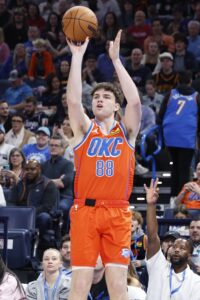 Brisbane Bullets:
Brisbane Bullets: 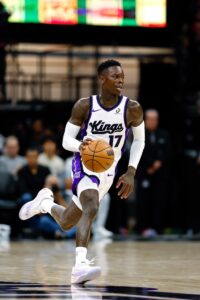
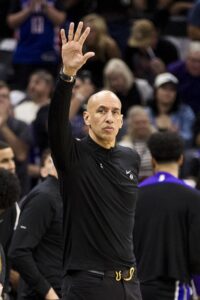 Interim head coach Doug Christie, who was promoted to the permanent role after the season, guided Sacramento to a winning record after taking over for Brown, but it wasn’t enough to get the team back to .500 or beyond the first game of the play-in tournament. And along the way, the Kings traded star point guard
Interim head coach Doug Christie, who was promoted to the permanent role after the season, guided Sacramento to a winning record after taking over for Brown, but it wasn’t enough to get the team back to .500 or beyond the first game of the play-in tournament. And along the way, the Kings traded star point guard  The Kings currently have 13 players on standard guaranteed contracts, plus Ellis on a non-guaranteed deal. That leaves one opening on the projected 15-man regular season roster.
The Kings currently have 13 players on standard guaranteed contracts, plus Ellis on a non-guaranteed deal. That leaves one opening on the projected 15-man regular season roster.